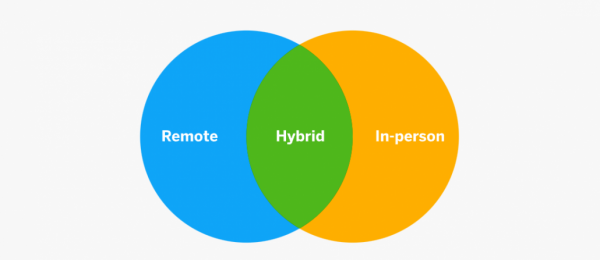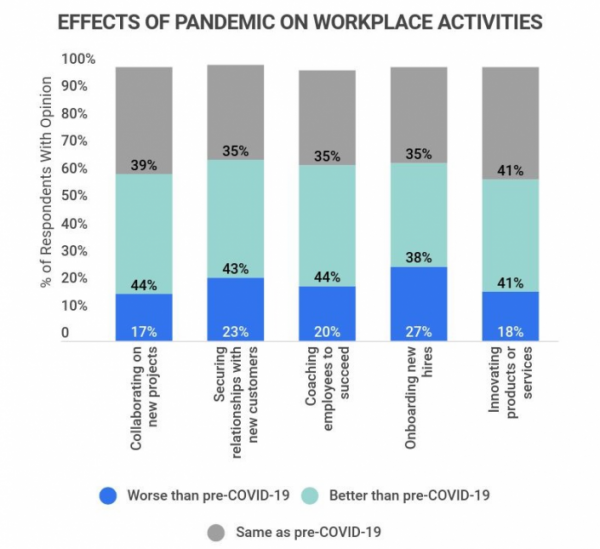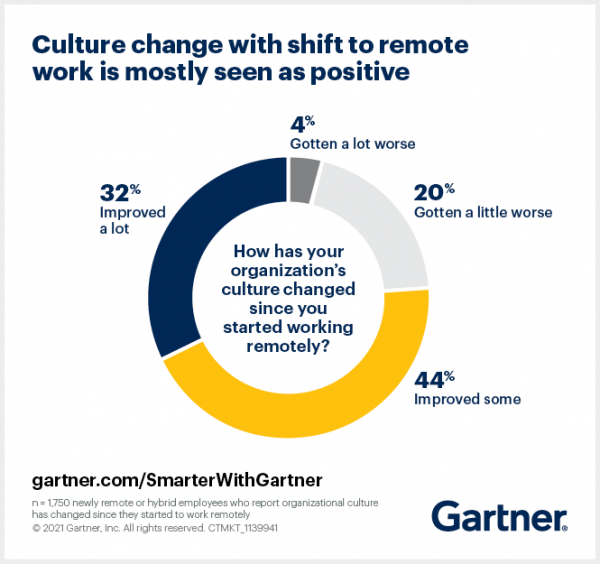After more than two years of adaptive work-life schedules, there is still no crystal ball to predict the future for businesses. However, finding a delicate balance between flexibility and forward motion can make all the difference in successfully transitioning into long-term success – especially for customer-facing companies.
While navigating this uncharted territory may seem intimidating at first glance, those who approach it with an open mind will be able to set their business apart as one prepared not just today but tomorrow too.
During and beyond this moment of change, businesses that are led by CEOs who are flexible and adaptable will stand out as attractive places to work. However, to successfully adopt a hybrid workspace, companies must learn to manage the transition to it.

Image Credit:- www.sap.com
What are Hybrid Workspaces?
The hybrid workplace concept incorporates elements of both telecommuting and office-based labor. Some or all workers in a hybrid workplace can work remotely at least part of the time in addition to spending time in a physical office.
Some workers of a firm that employs a hybrid model of work structure may be stationed in one or more physical offices, while others may perform their duties entirely from home or other off-site locations. In contrast, a model where all workers work from home eliminates the need for any physical location.
There may just be a small number of full-time workers in a hybrid setting, or many teams with staggered schedules rotate in and out every few weeks. A hybrid workplace may entirely consist of remote work with occasional in-person meetings. It’s also possible that most of the work occurs in an office setting, with remote access reserved for a select few.
No matter how it’s set up, a hybrid workspace aims to strike a happy medium between employees’ separate demands and their ability to work together effectively in a familiar setting. In this post, we’ll examine the benefits of a hybrid workplace and why more and more businesses are adopting this kind of employment.

Image Credit:- www.zippia.com Hybrid Work Statistic
Opportunities in Hybrid Workspaces
As HR technology evolves, hybrid workplaces that put employees first may become more adaptable, agile, and productive. Only 36% of workers in “typical companies” (conventional 40-hour workweek) are considered to be “high achievers,” as reported by Gartner. When companies provide their workers more freedom in when, where, and how they work, 55% report increased productivity.
- Productivity increases as workers have more control over their schedules and where they do their work, allowing them to use their commute time more effectively and be in the office at peak times for in-person collaboration. In addition, hybrid workspace software makes coordinating with colleagues and making the most of each workday simple.
- Increased opportunities for continuous learning. The performance-driven nature of many businesses frequently leaves workers with little time for growth and development. High production may disguise an exhausted staff, and an output-focused strategy does not allow long-term growth.
Some employees may not be able to work remotely due to personal issues. Younger workers may still live at home with their parents or roommates, making it difficult to establish a private home office. The ability to interact in person with coworkers is precious to them since it allows them to form bonds, acquire new knowledge, and have access to mentorship.
The advantage of hybrid workspaces is that workers may select when they work, allowing them to plan tasks outside peak meeting times when they are less likely to be interrupted.
- Cost savings from reduced office footprints and relocations to less expensive areas motivate businesses to reconsider their real estate plans. There is less turnover and savings from lower expenses with hybrid workers since they are more invested in their work.
- Increased job satisfaction and pleasure stemming from more freedom and independence boosts productivity and morale on the job and for the rest of an employee’s life. Therefore, maintaining a healthy work-life balance is essential to developing a productive hybrid workspace.
- With COVID-19 variations projected to be a persistent concern, the hybrid workspace model enables the design of office space to prioritize safety and sanitization, increasing the sense of separation between employees if you switch up who comes into the workplace and when you may facilitate social distance, more thorough cleaning, and simpler contact tracking.
- The remote work environment forced by the epidemic hasn’t harmed the vital customer connections that drive consumer-facing businesses.
Companies have increased their digital spending to provide a personalized experience for clients regardless of whether they want to conduct business with them online, in person, or via a hybrid of these channels. Because of these digital expenditures, companies can now equip their staff with the education and resources they need to thrive in today’s hybrid digital/physical workplace.
- You’ll gain easy access to a larger pool of potential employees. However, there are several possible constraints on productivity when employees are confined to a single office location with no remote work possibilities. Only applicants within a certain radius of your area will be considered for employment.
Use a hybrid workspace software, and you’ll be able to attract and recruit the best and brightest from worldwide. Also, diversity is a powerful marketing benefit for your employer brand, and it has been demonstrated to enhance profits for several organizations.

Image Credit:- www.gartner.com No Hybrid Workforce Models Wont Dilute Your Culture
Technology can mitigate pandemic health hazards. IoT sensors, for instance, may be used to control a building’s population by monitoring how many people are there. They can also tell how often a desk is used to see whether it needs to be disinfected. AI may analyze this information to find the safest possible workplaces for employees. It may also examine building layouts to create social distance and minimize encounters mechanically.
Conclusion
Now more than ever, organizations are embracing the idea of a hybrid working environment. With companies and employees alike recognizing both the convenience and importance of having physical headquarters alongside flexible work options, it’s clear that nobody should be left behind during this transition period. Taking action to create an adaptable workspace is vital to ensuring everyone can reap all the potential benefits, such as better sustainability practices or inclusivity – making now an excellent time for businesses everywhere to ensure they’re prepared!
